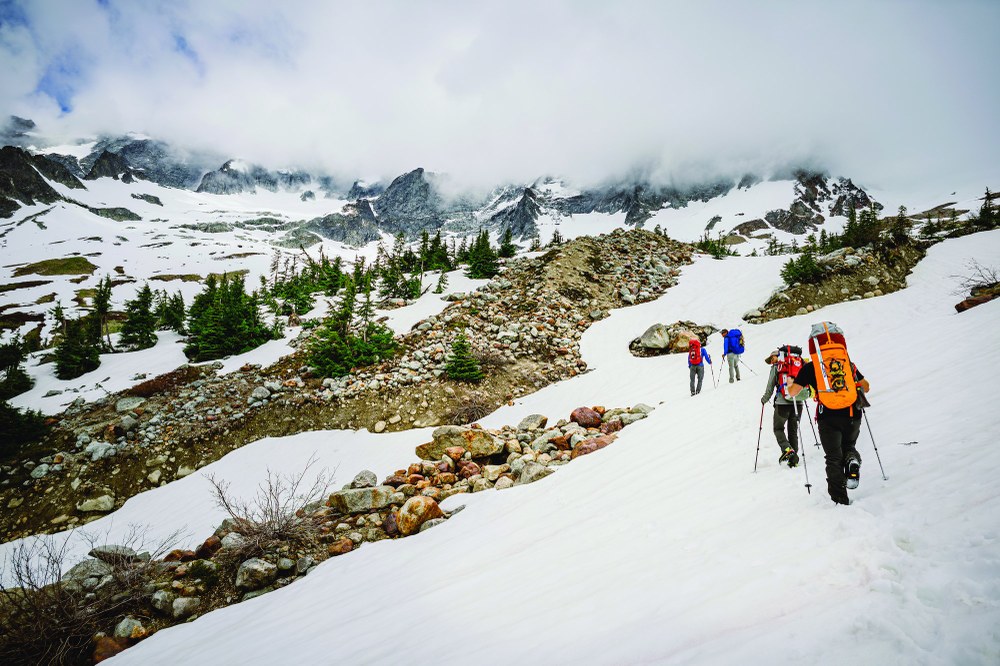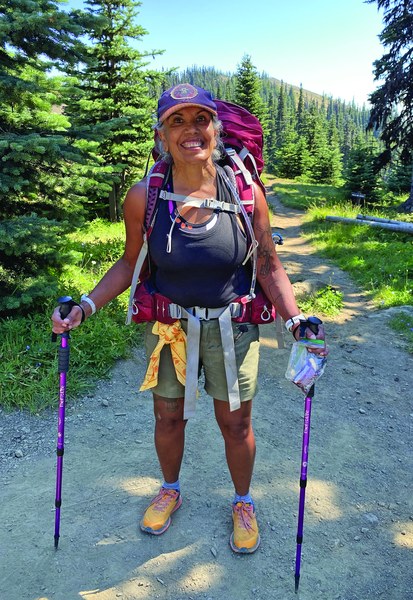
Mountaineering, an exhilarating and challenging pursuit centered around scaling towering peaks, transcends mere physical conquest. It embodies teamwork, resilience, and selflessness, all hallmarks of servant leadership.
Servant leadership is a leadership style first introduced by Robert K. Greenleaf in the 1970s. At its core, it encourages leaders to prioritize the well-being and development of their team members, with the leaders themselves taking on a role of service. Service to the team is a primary objective, and the summit is not merely a physical destination but a symbol of the group’s collective success. This approach emphasizes empathy, active listening, and a commitment to helping others succeed.
As a Mountaineer, I’ve witnessed firsthand how servant leadership helps achieve outdoor goals. When fostering a culture of safety, cooperation, and personal growth, significant accomplishments follow.
Why servant leadership?
In my time as a Mountaineer, I’ve encountered exceptional instances of servant leadership that have left a lasting impact. During one of my first scrambles, I was afraid to ask questions because I thought my fear made me unworthy of being a Mountaineer. I remember “fessing up” that I was afraid to descend and in response, my instructors and leaders were kind, gentle, and provided unwavering support.
During another scramble, the leaders began the trip by assessing each member’s abilities. This enabled them to better accommodate participants' skill levels throughout the trip. Everyone reached the final destination because each individual felt seen and supported by their leaders. The moments when I see servant leadership in action are the moments I love being a part of The Mountaineers because personal growth is not just an individual goal, it’s a shared aspiration – one that transforms a trip or course from a solitary pursuit to a collaborative adventure.
When servant leadership is not in place, the group suffers. I once attended a scramble that required last-minute changes due to a closed trailhead. The leader proceeded to choose a trail without providing information or seeking feedback from us regarding our skill levels and stressors. I had not seen a map of the trail and there was no way for me to assess whether it was a scramble I felt capable of doing. Participants began to struggle, and it heightened not only the participants' stress levels, but the leader’s as well. The leader's stress manifested as criticism directed at both the participants and their course instructors and leaders. The negative words impacted me, and I lost self-confidence in my scrambling. I did not feel physically or psychologically safe.
Servant leaders cultivate a sense of shared responsibility for each other's development, where teaching and learning is not confined to individual ambition but intertwined with the success and progress of the entire group. Servant leadership is a skill that most of us acquire through learning and experience. It is not an inherent skill, but a craft we must practice daily. Fostering a culture rooted in servant leadership is an ongoing journey, one that demands dedication and continuous refinement in every interaction.
As I reflect on my Mountaineers experiences, I am reminded that through my commitment to servant leadership, my leadership skills thrive, transforming any challenge I encounter – at The Mountaineers and beyond – into opportunities for growth and connection. By leading with actions rooted in empathy and conducive to growth, every Mountaineer can achieve their outdoor aspirations.
 Priya hiking in Olympic National Park. Photo by Barney Kinzer.
Priya hiking in Olympic National Park. Photo by Barney Kinzer.
Priya’s Servant Leadership Pro-Tips
Be an active listener
Active listening is a vital skill for servant leaders, especially Mountaineers. Pay attention to what others say, ask clarifying questions, and provide feedback. By listening actively, you can understand your team’s needs and respond accordingly. Imagine leading hikers of varying expertise to a summit. In order to maintain the safety of the group, you must actively listen to each member's input and feedback to adjust the pace, route, and strategy accordingly, while also listening for signs of fatigue, stress, or fear that may affect the group’s safety. By listening actively, you ensure everyone is safe and motivated to confidently reach the summit.
Enact empathy
Empathy is vital. Being an empathetic leader means being able to understand someone else’s perspective. Imagine a scenario in which you are guiding three climbers. One is a beginner who has never traversed a glacier and is nervous about the crevasses and steepness of the slope. As a leader, you empathize with the beginner climber's feelings and reassure them they are well-equipped and trained, provide additional time for practice, assign a supportive buddy, and consistently check in to ensure their comfort and confidence. By showing empathy, you create a positive and supportive atmosphere for the whole group to fully enjoy the adventure.
Practice self-awareness
Self-awareness is the ability to think deeply about your behavior and how it affects the people around you. Accept and grow from your own weaknesses and extend this awareness to your team’s individual strengths and weaknesses for collective growth. Suppose you’re leading a group of paddlers and recognize you tend to be impatient and overconfident, putting your team at risk. By practicing self-awareness and listening to your group’s feedback, you can adjust your leadership style accordingly while improving your own performance and securing the well-being of your team.
Encourage growth
Effective servant leaders are committed to helping their teams develop by providing opportunities for their team members to learn new skills, gain new experiences, and overcome challenges. Offer your team guidance, training, and feedback, and encourage participants to take on leadership roles. Suppose you’re a Basic Alpine Climbing course leader instructing a group of new students. You know the students have never done a high-altitude activity before. Eager to improve the students’ skills and confidence, you teach them how to cope with altitude sickness and extreme weather conditions while also assigning students to lead a section of the route. By offering your participants the opportunity for leadership and providing constructive feedback, you help the students grow as mountaineers and leaders.
Build community
Cultivate collaboration and engagement within your teams. Value the opinions of everyone and encourage participants to actively contribute. This approach enhances the team's collective wisdom, creativity, and problem-solving skills. A leader committed to building community knows that each member of the team has different perspectives, experiences, and expertise. For example, if you’re a mentoring leader, invite your mentee to plan the expedition, choose the route, and make strategic decisions. Create opportunities for the mentee to exchange feedback and support. By doing so, you build trust, respect, and cohesion, improving the chances that the mentee integrates into The Mountaineers community.
This article originally appeared in our spring 2024 issue of Mountaineer magazine. To view the original article in magazine form and read more stories from our publication, visit our magazine archive.
 Priya Sinha
Priya Sinha